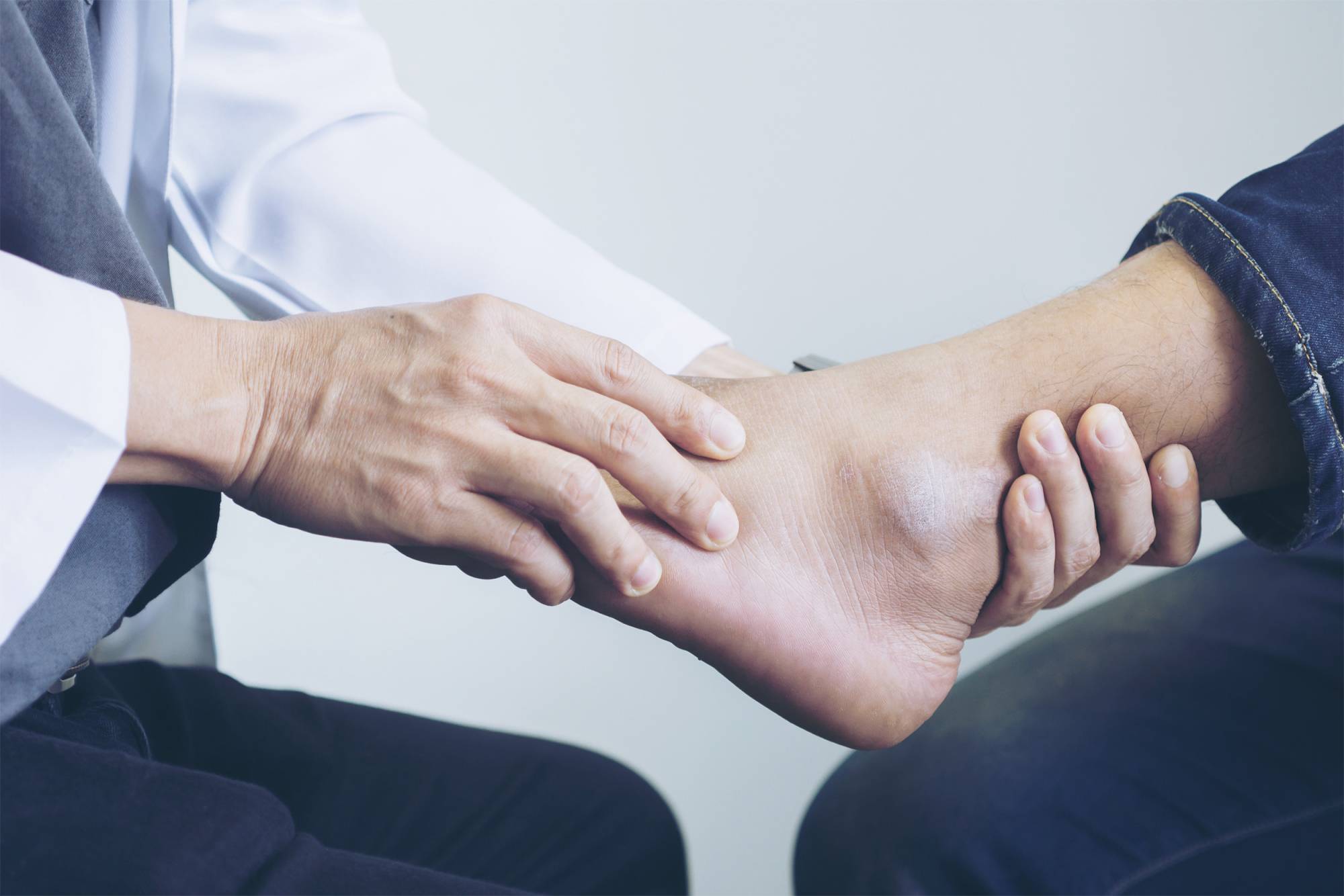- Accueil
- Chirurgie de la cheville
- Tendinopathies d’Achille
- Noninsertional Achilles Tendinopathy Treated with Gastrocnemius Lengthening
Noninsertional Achilles Tendinopathy Treated with Gastrocnemius Lengthening
Victoria B. Duthon, MD; Anne Lübbeke, MD, DSc; Sylvain R. Duc, MD; Richard Stern, MD; Mathieu Assal, MD
Abstract
Background: Surgery is frequently considered an option for refractory, symptomatic noninsertional Achilles tendinopathy. Gastrocnemius equinus can result in mechanical overload of the Achilles tendon and may be a factor in its etiology. Our hypothesis was that reducing load transmission to the Achilles tendon by gastrocnemius lengthening (Strayer procedure) may be an effective treatment.
Materials and Methods
A prospective case series of all patients with a minimum 1-year symptomatic noninsertional Achilles tendinopathy who underwent gastrocnemius lengthening was evaluated before surgery, and at 1 and 2 years after surgery. There were 14 patients (17 tendons).
Results
One year after surgery, the median American Orthopaedic Foot and Ankle Society (AOFAS) Ankle-Hindfoot score was 100 points, as compared to 71 points preoperatively (p < 0.001). The median total Foot Function Index (FFI) decreased significantly from 39 to 12 points at 1 year (p < 0.001) and remained stable (12 points) at 2 years. An electronic goniometer recorded a mean gain in ankle dorsiflexion of 13 degrees.
Conclusion
Gastrocnemius lengthening was an effective treatment for chronic Achilles noninsertional tendinopathy. Two-year results show good to excellent clinical outcome.
Introduction
Achilles "tendinopathy" is a broad term that describes Achilles tendon and paratenon pathologic conditions, which may include local pain, swelling, and associated impaired performance. The exact etiology of Achilles tendinopathy is unclear and multiple theories exist. Gastrocnemius tightness has been shown to be responsible for a variety of foot problems, and tension in the Achilles tendon is increased in patients with gastrocnemius equinus.
Discussion
This study confirmed our hypothesis that reducing Achilles tension by gastrocnemius recession could make a major improvement in recalcitrant Achilles tendinopathy. The results of the three outcome scores showed a statistically significant improvement in pain and foot and ankle function. All but one patient was satisfied with their results, with 11 of 14 (79%) returning to their previous level of sports activities at the 2-year followup. There were no complications; most importantly there were no wound healing problems in contrast to previous reports.
Key Words
Calcaneus Tendon; Main Body Achilles; Strayer Procedure; Gastrocnemius Recession; Achilles Over-Use Injury


 Prendre rendez-vous
Prendre rendez-vous
